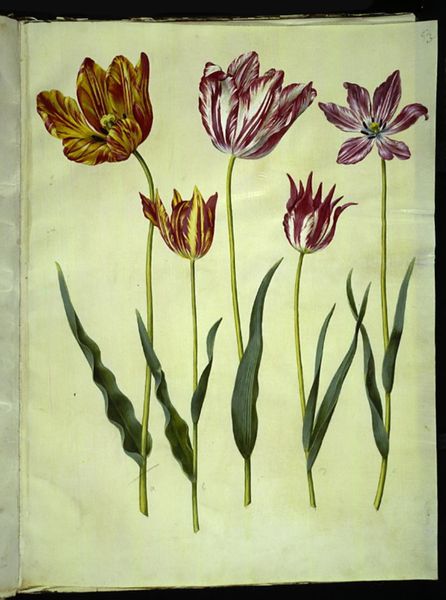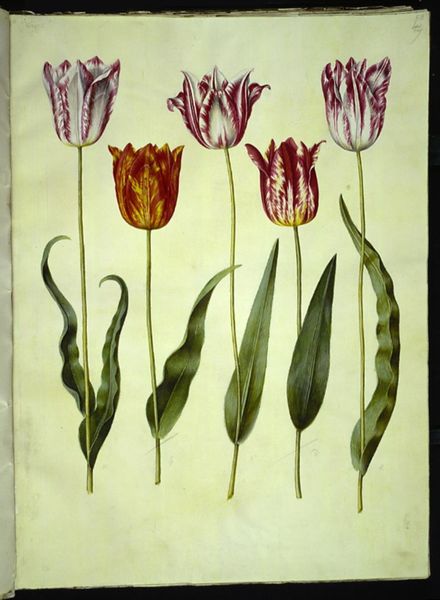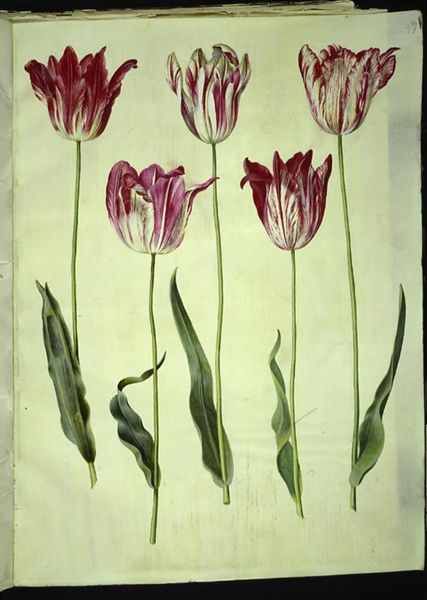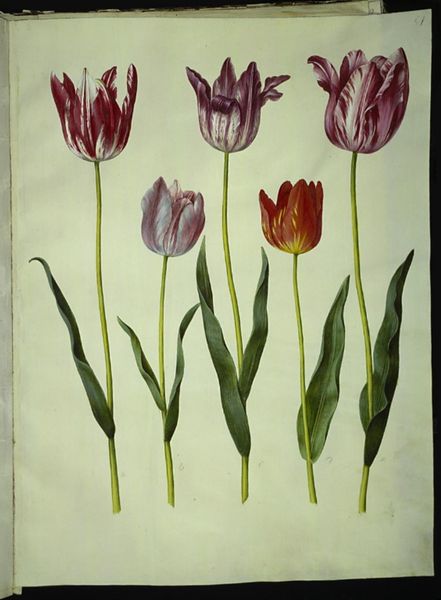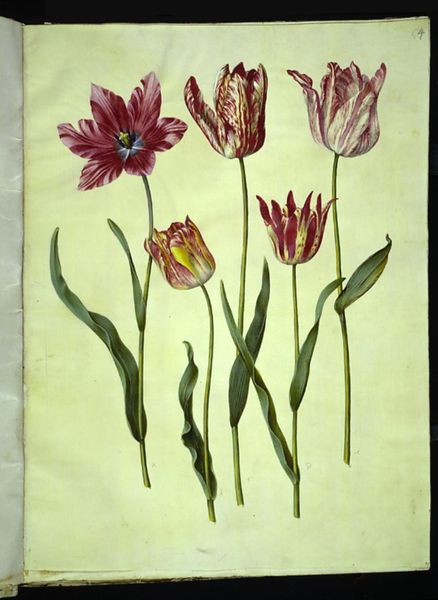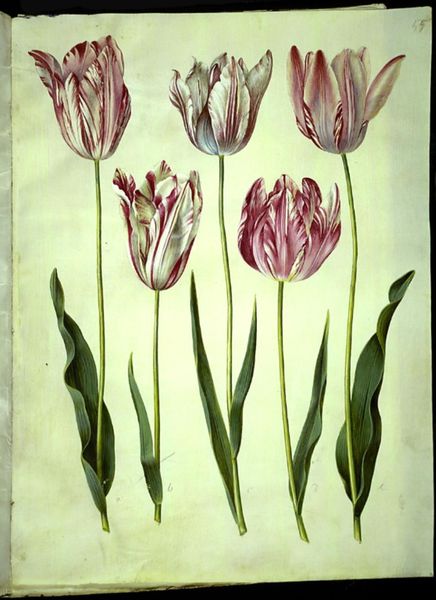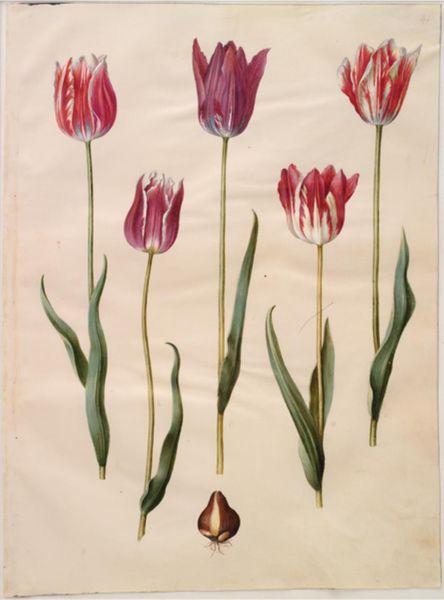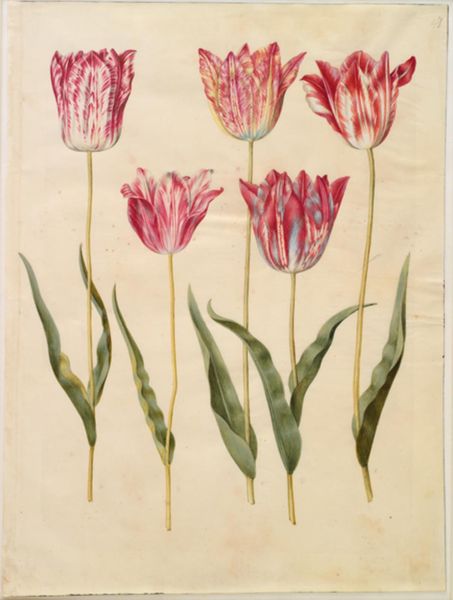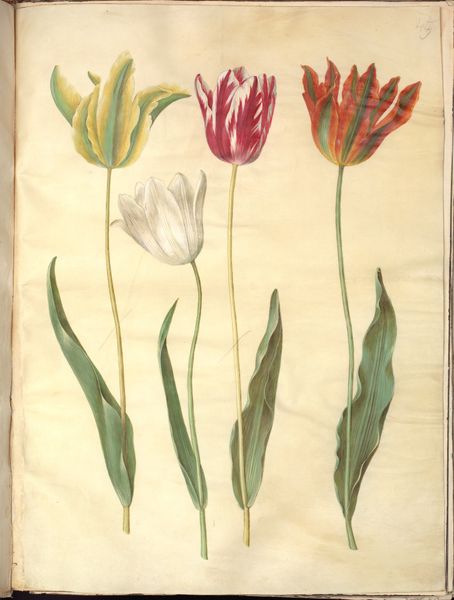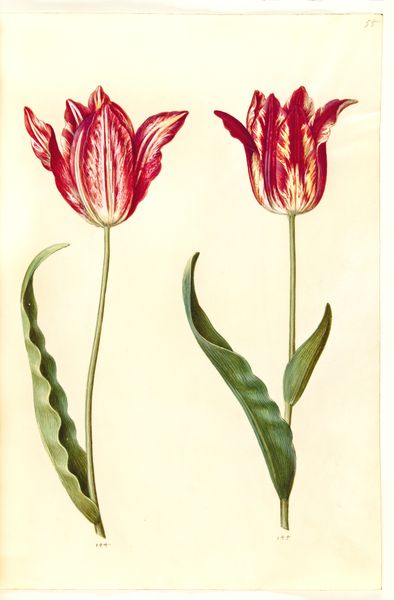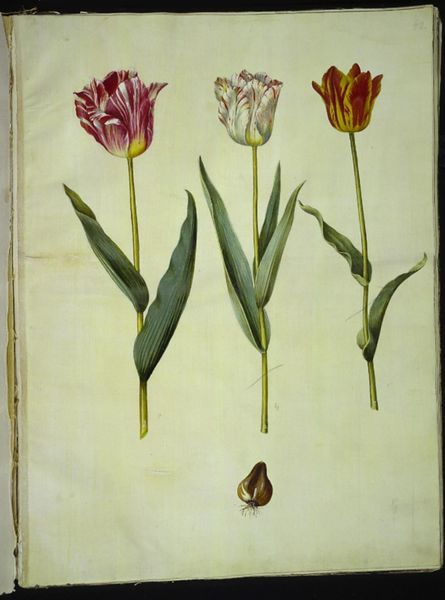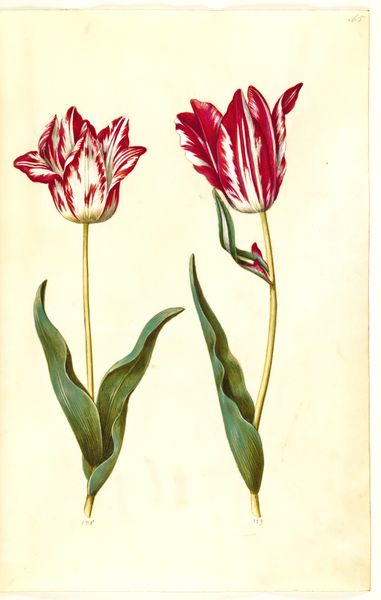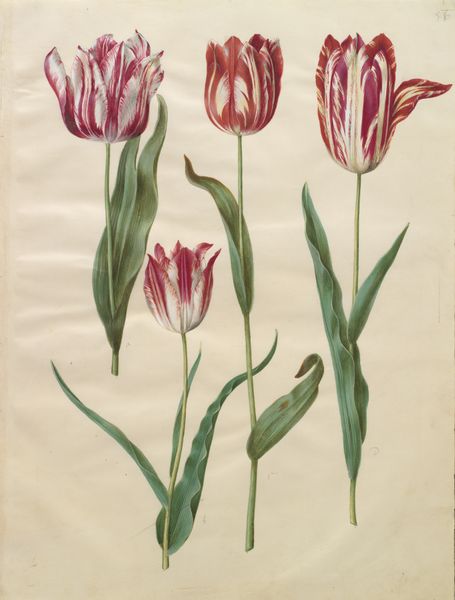
drawing, gouache
#
drawing
#
dutch-golden-age
#
gouache
#
botanical drawing
#
botanical art
Dimensions: 505 mm (height) x 385 mm (width) (bladmaal)
Hans Simon Holtzbecker rendered these tulips in delicate watercolor. In 17th-century Europe, the tulip wasn't just a flower; it was a symbol of wealth and status, reaching feverish heights during "Tulip Mania." Note the striking, flame-like patterns on the petals. This "broken" effect, caused by a virus, ironically increased the tulip's value, resembling the coveted patterns seen in precious textiles and exotic plumage. We find echoes of this floral infatuation in earlier Dutch still lifes, where flowers represented not only beauty but also transience and vanity. Consider how, across cultures, flowers often embody ephemeral beauty and the cycle of life. From ancient Egyptian lotus motifs symbolizing rebirth, to the Victorian language of flowers, where each bloom carried a specific sentiment. The tulip's unique story, however, intertwines beauty with economic frenzy, a potent reminder of our collective desires and follies. This beautiful image is steeped in the complex interplay between nature, commerce, and human psychology.
Comments
No comments
Be the first to comment and join the conversation on the ultimate creative platform.
